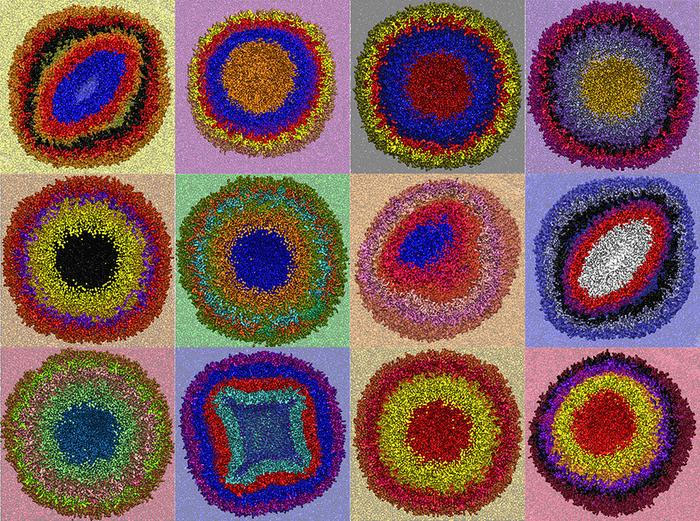| Jun 26, 2024 |
Revealing the dynamic choreography inside multilayer vesicles
(Nanowerk News) Our cells and the machinery inside them are engaged in a constant dance. This dance involves some surprisingly complicated choreography within the lipid bilayers that comprise cell membranes and vesicles — structures that transport waste or food within cells.
|
|
In a recent ACS Nano paper ("The Secret Ballet Inside Multivesicular Bodies"), Luis Mayorga and Diego Masone shed some light on how these vesicles self-assemble, knowledge that could help scientists design bio-inspired vesicles for drug-delivery or inspire them to create life-like synthetic materials.
|
 |
| A representation of multilayer lipid vesicles inspired by “Color Study: Squares with Concentric Circles,” by the artist Wassily Kandinsky. (Image: ACS Nano 2024, DOI: 10.1021/acsnano.4c01590)
|
|
Double-membrane vesicles have inner and outer lipid bilayers. While scientists previously predicted that these membranes fold and warp themselves into a variety of shapes, researchers could not observe the rearrangement experimentally. So, Mayorga and Masone used molecular dynamics calculations together with an algorithm (Journal of Chemical Theory and Computation, "Sequential Voxel-Based Leaflet Segmentation of Complex Lipid Morphologies") developed by Bart Bruininks and colleagues to virtually “segment” the layers so they can be seen separately.
|
|
After running dozens of simulations with different vesicle sizes and lipid compositions, five common shapes were identified: oblates and prolates (elongated or flattened blobs), toroids (doughnuts), stomatocytes (cup shapes) and spheroids. This work, say the researchers, offers insight into the “unexpected inner intricacies” of how lipid bodies spontaneously self-organize.
|

